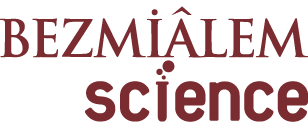ÖZET
Amaç:
Eritrosit süspansiyonları ile yapılan çalışmada ölçülen kapasitans değerlerinin değiştiği ve bu değişime de eritrosit agregasyonun neden olduğu bildirilmiştir. Bu çalışmada, eritrosit süspansiyonlarının empedans ölçümlerinin eritrosit agregasyon derecesinin belirlenmesinde farklı bir hesaplama yöntemiyle kullanılıp kullanılamayacağının belirlenmesi amaçlanmaktadır.
Yöntemler:
Farklı eritrosit süspansiyonlarının empedans ölçümleri hematokrit değerleri %40 olacak şekilde yatay cam kapillerde, enjektör pompasıyla oluşturulan beş saniyelik akım sonrasında endüktans-kapasitans-direnç metre ile kaydedilmiştir.
Bulgular:
Fosfat tamponlu salin içinde agregasyonun meydana gelmediği örneklere ait empedans değerinin, farklı derecelerde agregasyonun meydana geldiği örneklere ait empedans değerlerinden çıkarılması sonucunda daha önceden yapılan ölçümlere benzer bir şekilde dekstran, tam kan ve dilüsyon örneklerinde benzer özellikte olmasına rağmen dilüsyon örneklerinde bir azalma, dekstran örneğinde ise artış olduğu görülmektedir. Empedans kayıtlarından hesaplanan agregasyon indeksleri (AI) büyükten küçüğe doğru dekstran 500 >tam kan >1/2 dilüsyon şeklinde sıralanmaktadır ve bütün gruplar tam kan grubundan istatistiksel olarak farklıdır.
Sonuç:
Eritrosit süspansiyonlarının empedans ölçümlerinin her ne kadar eritrosit agregasyon kinetiğinin hesaplanmasına imkan tanımasa da, eritrosit agregasyonun derecesini belirten “agregasyon indeksi” olarak kullanılabileceği düşünülmektedir.



